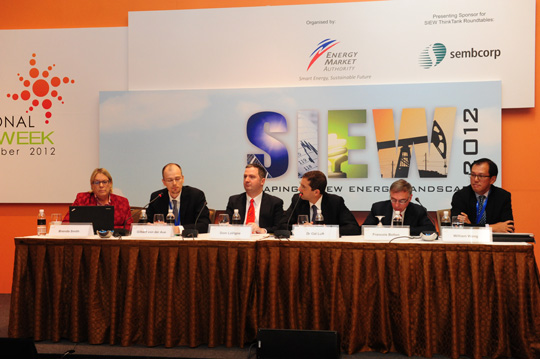
(Picture Credit: EMA)
Despite the availability of natural gas as a relatively cheap and clean source of energy, its use in transportation is very limited. Organised by the Institute for the Analysis of Global Security (IAGS) and the Journal of Energy Security, the roundtable on "Natural Gas Uses in Transportation: Liquid" explored the opportunities and challenges for greater use of natural gas in transportation.
Why should we use more natural gas? Dr Gal Luft, Co-Director of IAGS, who was moderating the panel, suggested that the price of oil, which fuels most of the vehicles today, is projected to continue its upward trend. The majority of the world's oil reserves are geographically concentrated and a significant sum of money would be required for these countries to sustain their production over the next few decades.
Dr Luft added that while electric vehicles could be an option, the current cost of the battery is high and not expected to decline dramatically soon.
The use of natural gas in transportation could come in at various forms, namely liquefied natural gas (LNG), compressed natural gas, methanol and dimethyl ether (DME). Many countries have embarked on various test-beds to trial these natural gas forms as a viable alternative fuel for transportation. ;
On fuel cost competitiveness, the panel of experts said the various forms of natural gas are already price competitive relative to gasoline or diesel. For example, gasoline costs US$3.69/gasoline gallon equivalent (gge), while methane (M-85) costs lower at US$3.26/gge.
Moreover, unlike conventional oil, the use of natural gas has a less adverse impact on the environment. Natural gas has substantially lower carbon dioxide and particulate matter (or soot) emissions.
Francois Bollon, Management & Marketing Consultant, Energy Specialist, FRMB Consulting, shared that tighter emissions control could be the main driver for more widespread use of DME. This is because DME is one of the most cost-effective ways to meet the emission standards, given its lower fuel cost and the fact that it does not require the installation of expensive exhaust gas after-treatment devices.
Overall, in considering each of these natural gas forms as options, there is a need to balance various factors such as platform cost, fuel cost, refuelling infrastructure cost, refuelling time, the range of distance covered between refuelling, greenhouse gas emissions and safety.
By :Leow Rui Ping, EMA